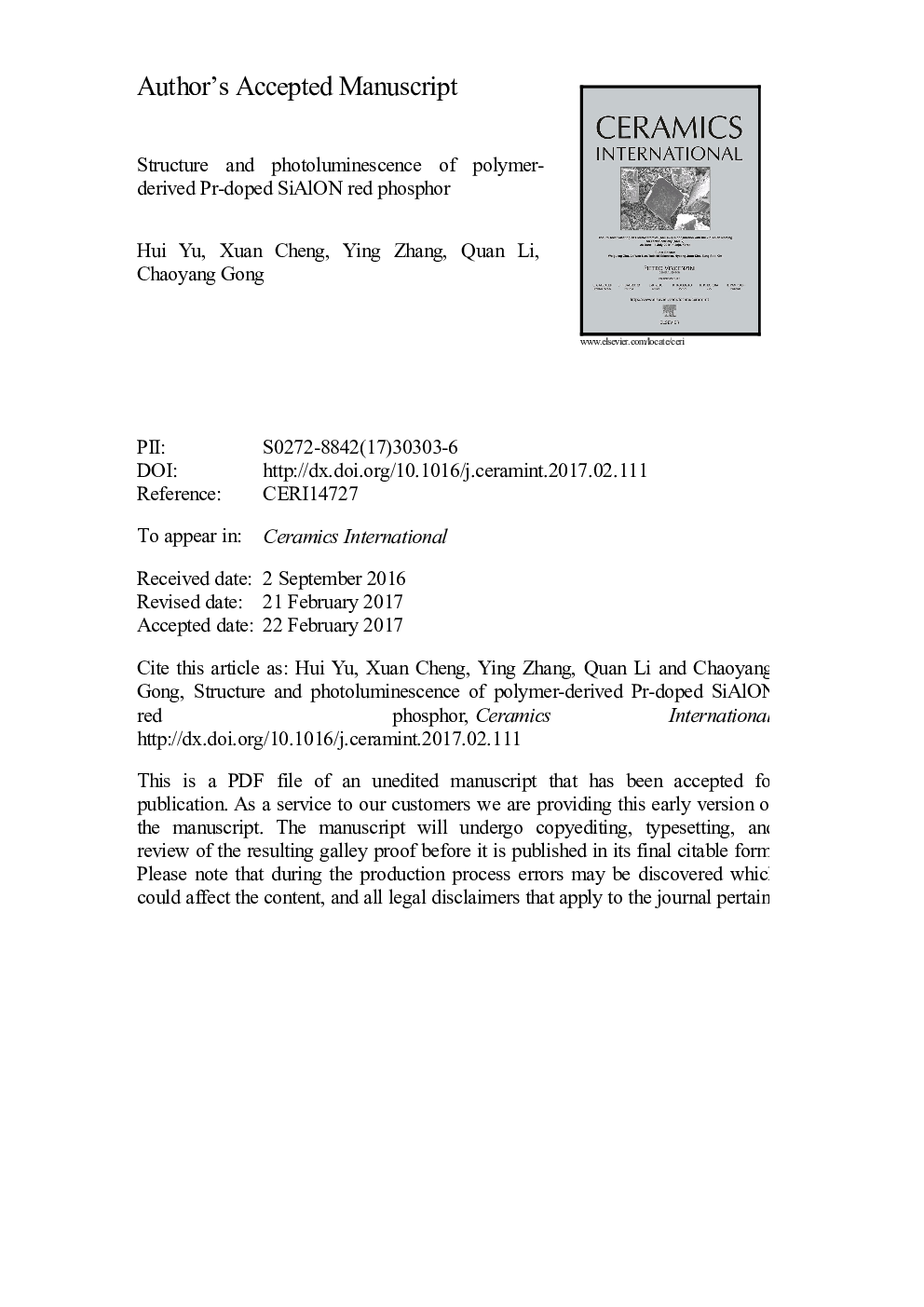| Article ID | Journal | Published Year | Pages | File Type |
|---|---|---|---|---|
| 5437930 | Ceramics International | 2017 | 24 Pages |
Abstract
The praseodymium (Pr)-doped silicon based aluminum oxynitride (SiAlON) red phosphors were prepared by a novel polymer-derived method using polycarbosilane and acetylacetonates as the starting materials. The organic precursors containing Pr and Al were formed via polymer reactions at 320 °C, followed by nitridizing with NH3 at 800 °C for the organic-inorganic transformation, and finally by sintering under N2 at 1650 °C for the crystallization. Accordingly, the chemical composition, surface morphology, crystal structure and photoluminescence property of the polymer-derived Pr-doped SiAlON phosphors were studied. The strong red emission was observed at 623 nm under the excitation of 290 nm with the average decay time of 30 μs, corresponding to 1D2â3H4 transition. The empirical formula was determined to be Si3.0Al0.2O0.3N3.0C0.03Pr0.02, which is Si rich with trace amount of C. The main crystal phase was identified as hexagonal β-(Si,Al)3(O,N)4:Pr with a space group P63. Each Pr ion was located in the lattice along c-axis by coordinating with three nearest N/O atoms in the neighboring plane. In addition, the amorphous Si rich components were also presented. Possible impure phases, accounted for less than 5%, might include SiC, (Pr2(Al0.5Si2.5O3.5N3.5) and PrSi3N5.
Related Topics
Physical Sciences and Engineering
Materials Science
Ceramics and Composites
Authors
Hui Yu, Xuan Cheng, Ying Zhang, Quan Li, Chaoyang Gong,
